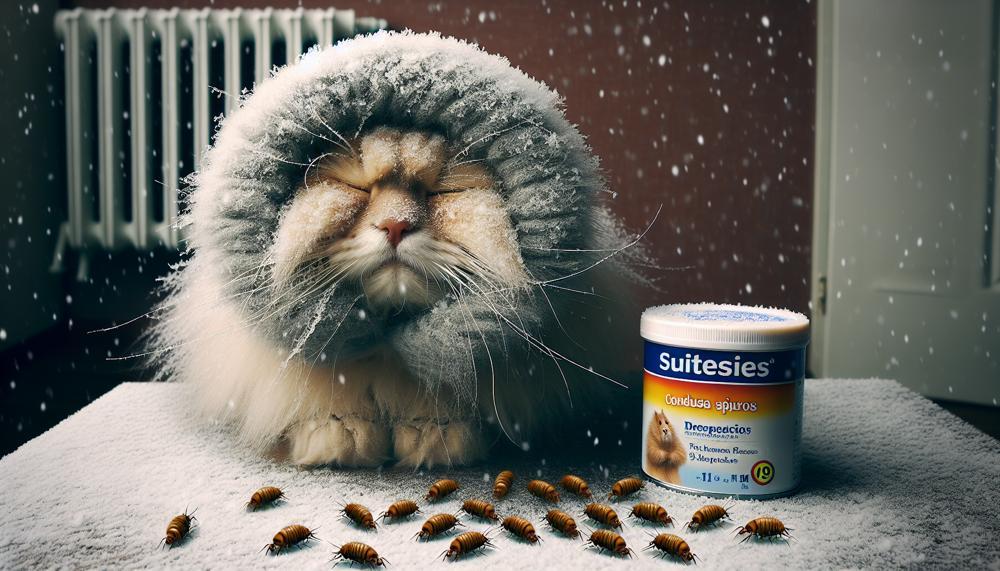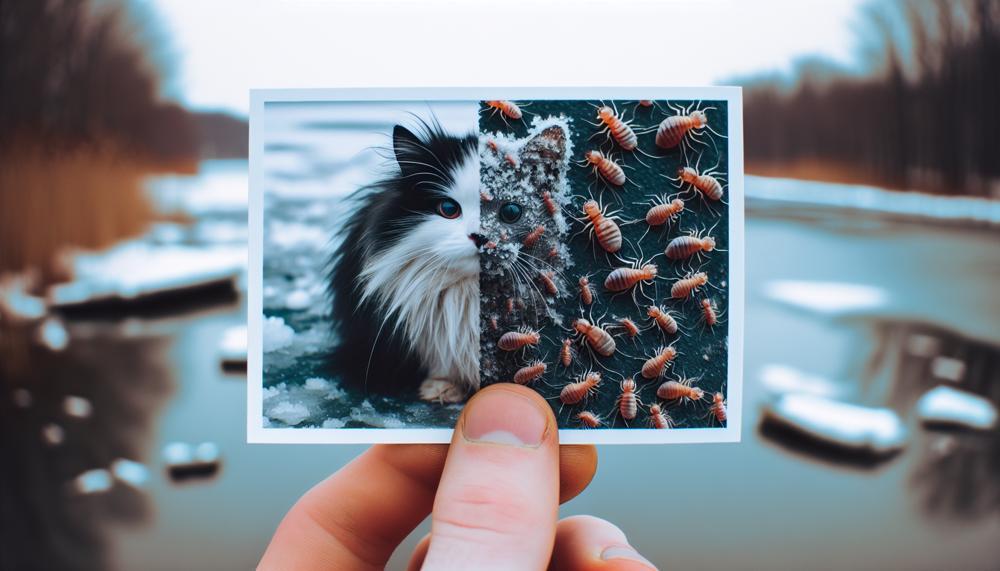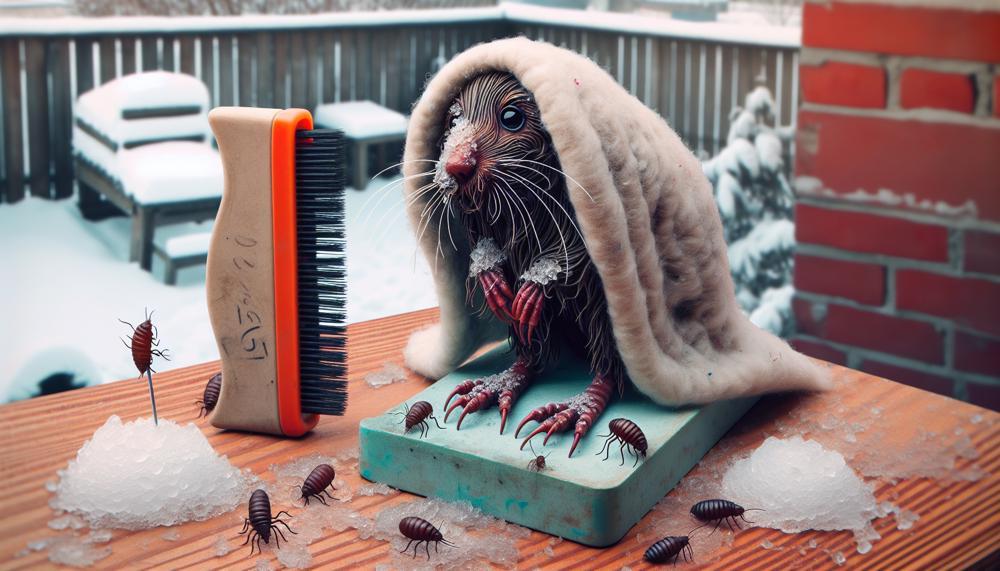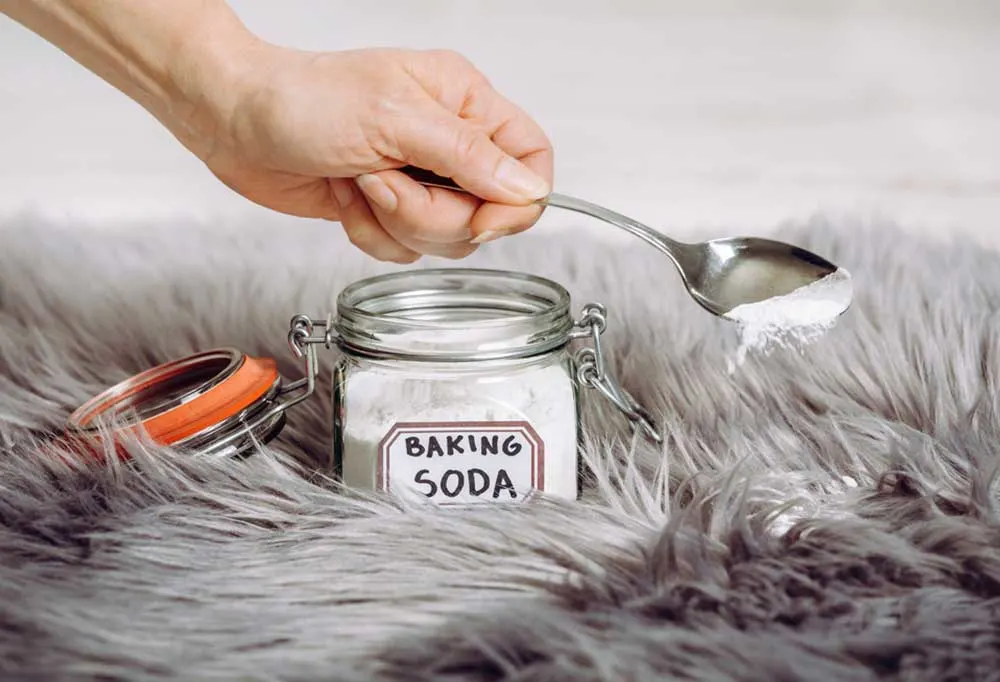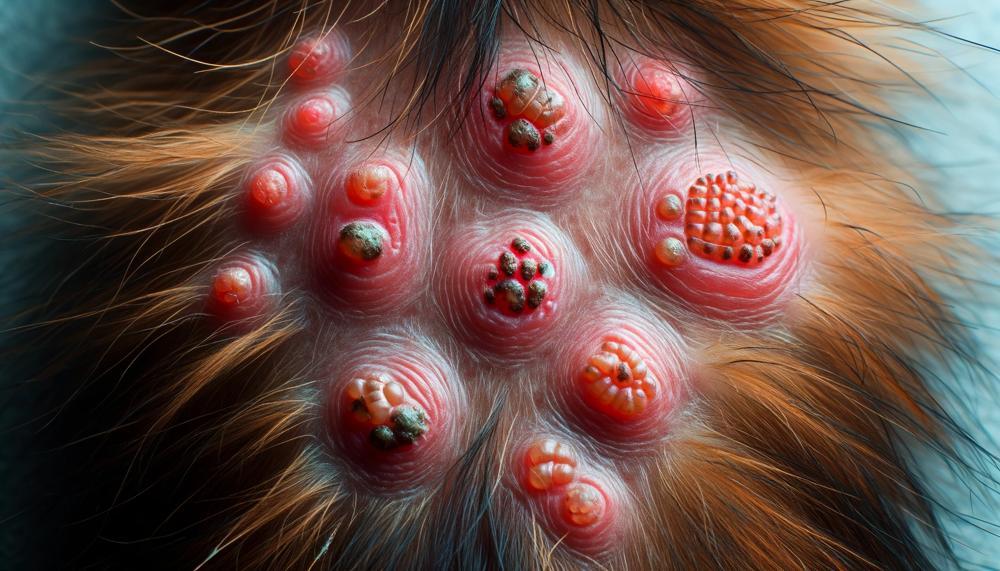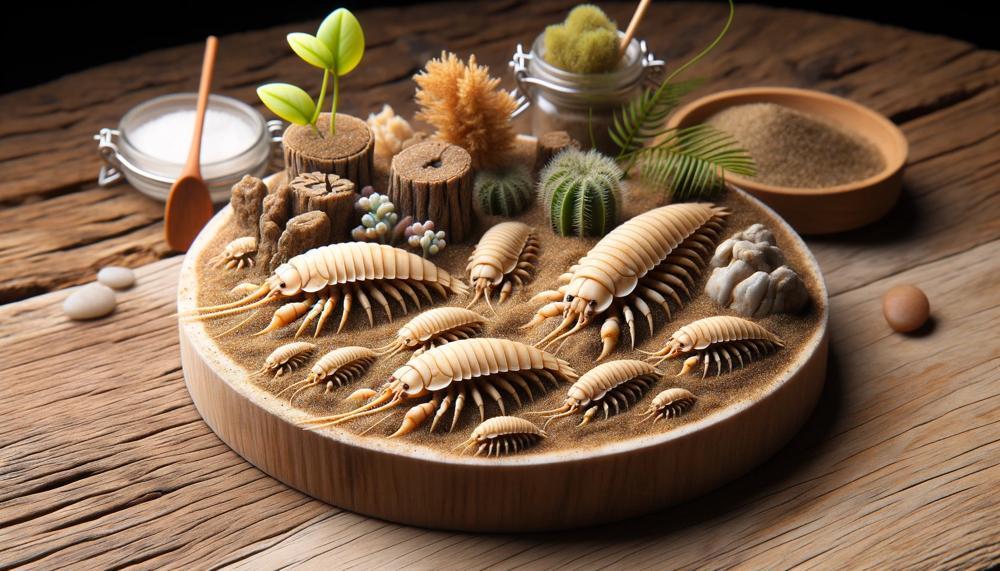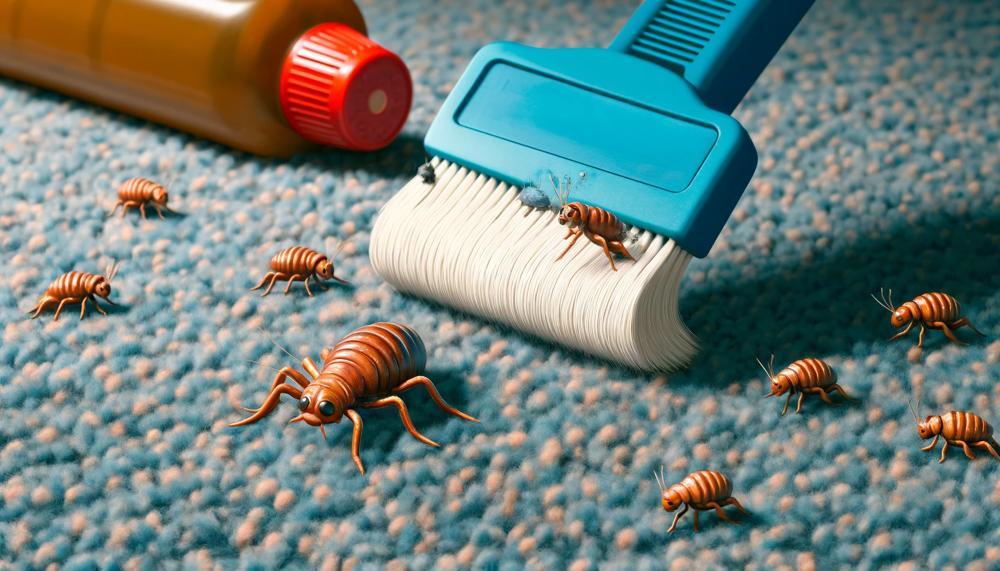In the realm of household pests, fleas often take center stage, causing distress to both pets and their owners. While these tiny, blood-sucking creatures are a nuisance all year round, the arrival of cold weather brings about unique challenges in flea control.
In this blog post, we’ll delve into the effects of cold weather on fleas, exploring how it impacts their populations, life cycle, behavior, and more.
From understanding these effects to implementing effective control measures, this comprehensive guide will help you keep your furry friends flea-free, even in the chilliest of seasons.
Table of Contents
- 1 Can Cold Weather Kill Fleas in Different Life Stages: Eggs, Larvae, Pupae, and Adults
- 2 Understanding the Ideal Temperature Range for Fleas to Thrive
- 3 Flea Adaptations and Resilience in Cold Climates: How They Cope with Low Temperatures
- 4 The Role of Indoor Environments: How Cold Weather Affects Fleas Inside Homes
- 5 The Effects of Cold Weather on Flea Activity: Reduced Movement, Feeding, and Reproduction
- 6 Flea Control Strategies in Cold Weather: Effective Methods to Combat Flea Infestations
- 7 Conclusion
Can Cold Weather Kill Fleas in Different Life Stages: Eggs, Larvae, Pupae, and Adults
Indeed, fleas exhibit varying degrees of resilience against cold temperatures depending on their life stage. Each stage possesses unique physiological adaptations that influence its tolerance to cold.
Let’s delve into the cold tolerance of each life stage:
Eggs:
- Encased in a protective shell, flea eggs can withstand cold temperatures for extended periods.
- Eggs can enter a state of diapause, reducing their metabolic activity and allowing them to survive in cold conditions.
- This adaptation enables flea eggs to persist in cold environments until favorable conditions for hatching arise.
Larvae:
- Flea larvae are more vulnerable to cold than eggs due to their lack of protective covering.
- Larvae rely on warmth and humidity to survive and grow.
- Exposure to cold temperatures can slow down their development and eventually lead to their death.
Pupae:
- Flea pupae are the most susceptible to cold temperatures.
- Enclosed within a silken cocoon, pupae are unable to move or feed.
- Cold temperatures can disrupt their metamorphosis and cause them to die.
- Adult fleas can survive in cold weather for several weeks, but they become inactive and seek shelter to escape the cold.
- They may enter a state of torpor, reducing their metabolic activity and conserving energy.
- Adult fleas can survive in cold environments by finding warm places to hide, such as in animal bedding or inside homes.
- High humidity (>60%) can create a favorable environment for fleas to thrive, as it helps them retain moisture.
- Poor insulation can allow cold air to enter the home, which can make it difficult for fleas to survive.
- At temperatures below 50°F (10°C), fleas become inactive and may even die.
- Carpeting and furniture can provide fleas with places to lay eggs and hide from predators.
- Reduced Movement: In cold temperatures, fleas become sluggish and less agile. Their metabolism slows down, conserving energy to survive the cold. This reduced movement makes it harder for fleas to find hosts, mate, and lay eggs.
- Inhibited Feeding: Cold temperatures also affect flea feeding. The blood of their hosts becomes thicker and less accessible, making it difficult for fleas to draw blood. This lack of nutrition weakens fleas and reduces their ability to reproduce.
- Delayed Reproduction: Flea reproduction is highly dependent on temperature. In cold weather, the development of flea eggs and larvae slows down or even stops. This delay in reproduction can help to control flea populations, as fewer fleas are able to reach adulthood and reproduce.
- Keep your home clean and free of clutter to reduce hiding places for fleas.
- Maintain a healthy weight for your pet, as overweight animals are more susceptible to flea infestations.
- Treat all pets in your household to prevent the spread of fleas.
- Regularly inspect your pet for fleas, especially after spending time outdoors.
- If you suspect a flea infestation, contact your veterinarian for advice and recommendations.
Adults:
Understanding the cold tolerance of different flea life stages is crucial for effective flea control. By targeting specific life stages with appropriate measures, we can significantly reduce flea populations and prevent infestations.
Understanding the Ideal Temperature Range for Fleas to Thrive
Fleas are ectoparasites that thrive in warm, humid environments. They are most active during the summer months when temperatures are high and humidity is elevated. The ideal temperature range for fleas to thrive is between 65 and 80 degrees Fahrenheit. At these temperatures, fleas can reproduce rapidly and their populations can quickly increase.
Eggs are laid by female fleas in warm, humid areas, such as carpets, bedding, and pet fur. The eggs hatch into larvae, which feed on organic matter in the environment. The larvae then pupate, and the adults emerge from the pupae. Adult fleas are blood-feeders, and they typically feed on animals, such as dogs, cats, and humans.
Fleas can survive in temperatures outside of the ideal range, but their reproduction and development rates are slowed down. At temperatures below 65 degrees Fahrenheit, fleas become less active and their reproduction rates decrease. At temperatures above 80 degrees Fahrenheit, fleas can become stressed and their mortality rates increase.
It is important to note that fleas can still survive and reproduce in indoor environments, even during the winter months. Homes and businesses that are heated to a comfortable temperature for humans can provide an ideal environment for fleas to thrive.
To prevent flea infestations, it is important to keep your home clean and free of debris. Vacuum regularly and wash bedding and pet fur in hot water. You should also treat your pets with a flea control product to kill fleas and prevent them from reproducing.
| Life Stage | Ideal Temperature Range (°F) |
|---|---|
| Eggs | 70-80 |
| Larvae | 75-85 |
| Pupae | 65-75 |
| Adults | 65-80 |
Flea Adaptations and Resilience in Cold Climates: How They Cope with Low Temperatures
Cold Hardiness
Fleas possess a remarkable ability to withstand extreme cold temperatures. Their bodies contain high levels of glycerol, a natural antifreeze that prevents their cells from freezing and rupturing.
Reduced Activity
Fleas enter a state of reduced activity during cold periods. They slow down their metabolism, conserve energy, and seek shelter in warm, protected locations, such as animal nests, burrows, or cracks in the ground. This state of dormancy, known as diapause, helps them survive until more favourable conditions return.
Host-Seeking Behaviour
Fleas actively seek out warm-blooded hosts, such as animals or birds, to feed on their blood and maintain their body temperature. This behaviour allows them to access a stable source of warmth and nourishment, even in cold environments.
Reproductive Strategies
Fleas exhibit opportunistic reproductive behaviour in response to cold climates. They may lay fewer eggs or delay egg-laying until temperatures become more favourable. Additionally, flea eggs possess a protective coating that helps them survive harsh conditions and hatch when conditions improve.
Fleas survive and maintain their populations in cold climates through a combination of adaptations, including cold hardiness, reduced activity, host-seeking behaviour, and strategic reproductive strategies. These adaptations enable them to tolerate low temperatures, conserve energy, find sources of warmth and nourishment, and ensure the survival of their offspring until more favourable conditions return.
The Role of Indoor Environments: How Cold Weather Affects Fleas Inside Homes
| Factor | Effect on Fleas |
|---|---|
| Humidity Levels | – Low humidity (<40%) can desiccate fleas, causing them to die.
|
| Insulation | – Good insulation can help to maintain a warm and humid environment inside the home, which is ideal for fleas.
|
| Temperature | – Fleas are cold-blooded insects, so their activity is greatly influenced by temperature.
|
| Other Factors | – The presence of pets can provide fleas with a food source and a place to hide.
|
The Effects of Cold Weather on Flea Activity: Reduced Movement, Feeding, and Reproduction
| Cold Temperature Effect | Impact on Fleas |
|---|---|
| Reduced Movement | Slows down flea movement, making them less active and less likely to jump or crawl. |
| Inhibited Feeding | Cold temperatures can make it difficult for fleas to feed, as the blood of their hosts thickens and becomes less accessible. |
| Delayed Reproduction | Cold temperatures can slow down or even halt flea reproduction, as the development of eggs and larvae is temperature-dependent. |
Elaboration:
Flea Control Strategies in Cold Weather: Effective Methods to Combat Flea Infestations
| Flea Control Strategy | Description |
|---|---|
| Vacuuming | Vacuum carpets, rugs, and upholstery thoroughly. Pay special attention to areas where pets frequent and under furniture. |
| Washing | Launder pet bedding, throws, and blankets in hot water (at least 140°F) to kill fleas and eggs. |
| Grooming | Brush your pet regularly to remove fleas and prevent them from laying eggs. Use a flea comb to remove any remaining fleas. |
| Topical Treatments | Apply a topical flea treatment to your pet according to the product’s instructions. These treatments kill fleas on contact and provide long-lasting protection. |
| Oral Medications | Administer oral flea medication to your pet as directed by your veterinarian. These medications kill fleas from the inside out and can provide protection for several months. |
| Environmental Sprays | Use an insecticide spray specifically designed for fleas in areas where they are likely to hide, such as carpets, under furniture, and in pet bedding. |
| Diatomaceous Earth | Sprinkle food-grade diatomaceous earth in areas where fleas congregate. This natural powder dehydrates and kills fleas. |
Additional Tips:
***
Also Read:
Conclusion
Winter’s icy grip presents both challenges and opportunities. While cold weather can slow down flea activity, it doesn’t completely eliminate them. Understanding how fleas adapt and survive in chilly conditions is crucial for effective pest control.
From reduced movement and feeding to delayed reproduction, cold weather impacts flea behavior and life cycles. To combat flea infestations during winter, a combination of strategies is essential. Regular vacuuming, washing, and grooming of pets, coupled with topical treatments or oral medications, can significantly reduce flea populations.
Environmental sprays, diatomaceous earth, and maintaining a clean, clutter-free home further bolster your defense against these pesky invaders.
By understanding flea behavior in cold weather and implementing targeted control measures, you can keep your furry friends flea-free and your home a haven of comfort, even in the chilliest of seasons.

